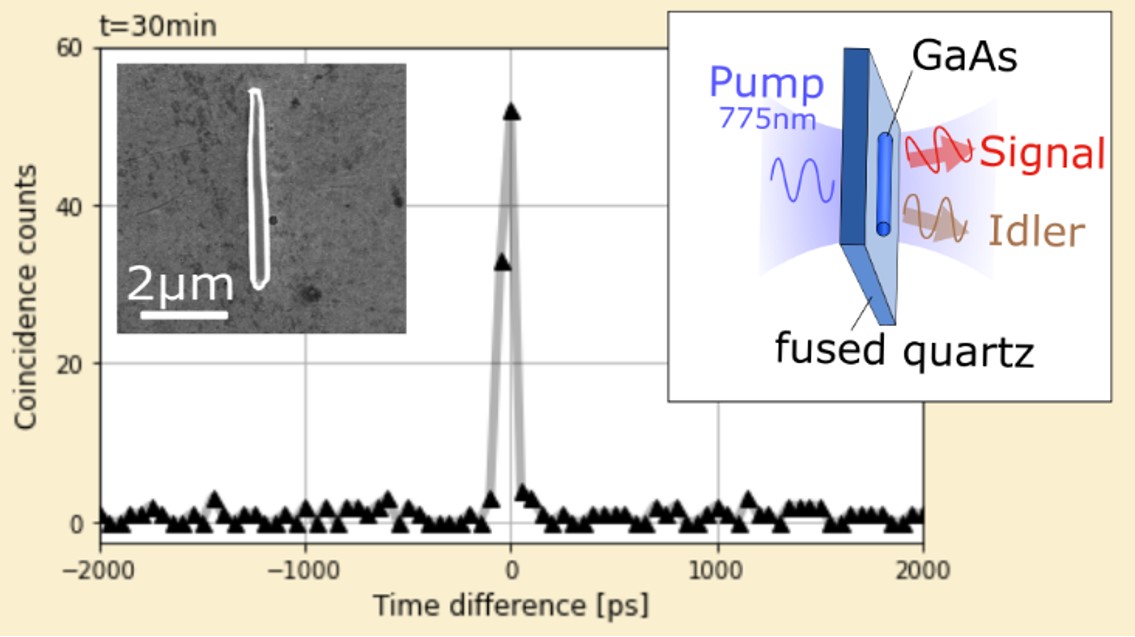Telecom-band Biphoton Emission from Single GaAs Nanowires
Miniaturization of biphoton light sources is an important requirement to achieve scalable and stable integrated quantum devices. Photon pairs, or similarly heralded single photons, generated via spontaneous parametric down-conversion (SPDC) profit from high indistinguishability, room temperature operation, simple signal filtering, and coherent emission as well as entanglement in several degrees of freedom. Miniaturization to the micrometer or submicrometer scale, to sizes smaller than the coherence length, relaxes the phase-matching condition and reduces the footprint of the source.
The SPDC from individual self-assisted grown zinc-blende GaAs nanowires with lengths of 5.2 ± 0.4 μm and diameters of 430 ± 30 nm was measured and analyzed at ETH Zurich by the group of R. Grange. Taking into account transmission losses, the pump fluence, and the nanowire volume, a biphoton generation of 60 GHz/Wm was achieved, which is at least 3 times higher than that of previously reported on single LiNbO3 microcube systems.
Contacts : José Penuelas, Nicolas Chauvin
Reference:
Background-Free Near-Infrared Biphoton Emission from Single GaAs Nanowires
Grégoire Saerens, Thomas Dursap, Ian Hesner, Ngoc M. H. Duong, Alexander S. Solntsev, Andrea Morandi, Andreas Maeder, Artemios Karvounis, Philippe Regreny, Robert J. Chapman, Alexandre Danescu, Nicolas Chauvin, José Penuelas, and Rachel Grange
Nano Lett. 2023, 23, 8, 3245-3250
doi.org/10.1021/acs.nanolett.3c00026
Collaborations: ETH Zurich and University of Technology Sydney





